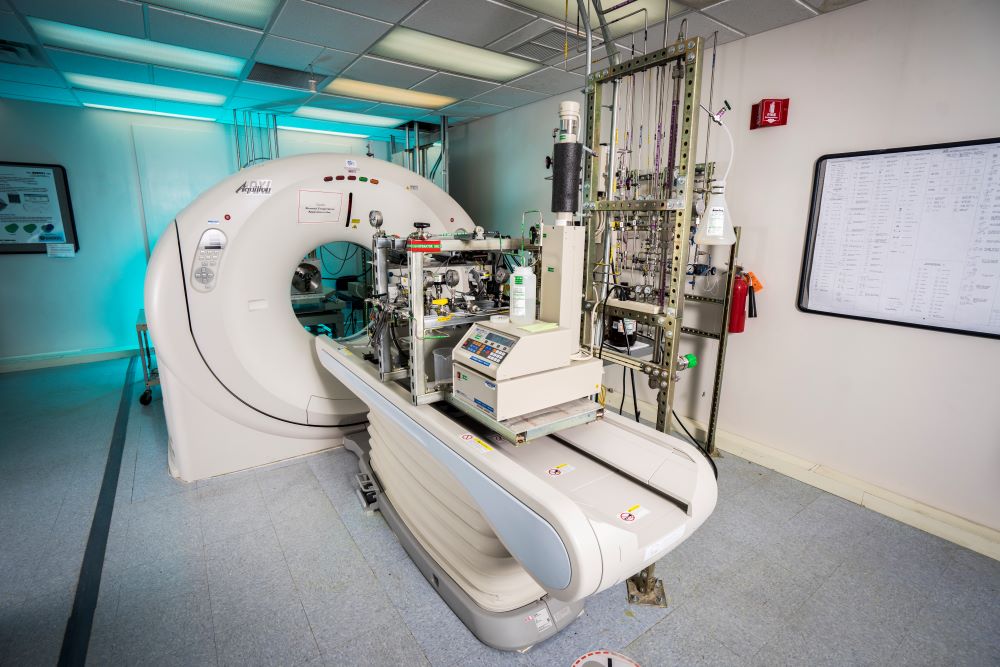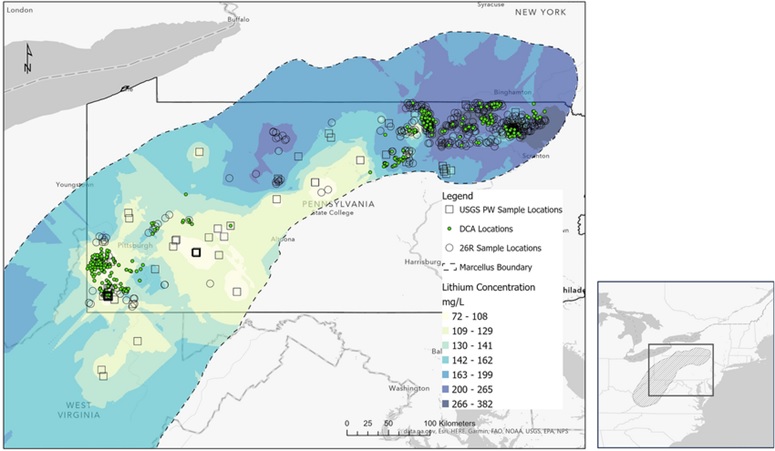Geological and Environmental Systems
Examining geologic reservoirs and materials to maximize efficient production and utilization of domestic energy resources.
NETL is developing the technologies, tools and methods to effectively produce and use America's abundant domestic energy resources — helping to ensure a reliable and secure energy future.
NETL's Geological and Environmental Systems (GES) directorate examines how to best leverage geologic reservoirs and resources to meet America's critical energy needs. Our research uses new and historical data from field trials and laboratory experiments and novel computational tools to assess engineered and natural systems in the Earth's subsurface. Applications include recovering in situ critical minerals and materials (CMM), efficiently developing conventional and unconventional oil and gas resources, assessing geologic storage and managing produced water.
We support R&D projects spanning field scale to molecular levels and microseconds to centuries. Expertise includes monitoring, analyzing and predicting the physical, chemical and biological characteristics of the Earth's complex surface, subsurface and offshore environments.
Recent Publications
Geological and Environmental Systems
Geochemistry
NETL's Geochemistry research focuses on building new tools and processes to study the physical effects of developing energy-related natural resources on natural and engineered geologic systems. This includes addressing challenges with recovering CMM to help create a reliable, domestic supply chain. Our expertise spans subsurface geochemistry and geomicrobiology, mineralogy, resource assessment, fluid-rock interactions monitoring and experimental assessment and fluids monitoring as they move through the Earth's crust. Leveraging the Lab's world-class resources, we conduct fluid chemistry analysis, isotope analysis, microbiological DNA sequencing, subsurface process analysis, geomaterials characterization, cement and wellbore integrity investigations as well as studies under simulated subsurface conditions.

Geo-Analysis and Monitoring
NETL's Geo-Analysis and Monitoring research includes characterization and modeling activities that support resource extraction and geothermal development through geospatial and geotemporal approaches to data. This includes using artificial intelligence (AI)/machine learning (ML) and state-of-the-art data visualization.
Research expertise includes airborne, ground-based and field detection and monitoring of subsurface features and infrastructure; data mining and analysis; monitoring hydrocarbon loss; geophysics research; spectral imaging and remote sensing; tracers; geospatial mapping, analysis and interpretation; and data analysis using statistical methods and AI/ML.

Reservoir Engineering
NETL's Reservoir Engineering research focuses on characterizing subsurface fluid flow and impacts to underground reservoirs and their response to resource recovery and utilization. With this knowledge, researchers can predict the behavior of reservoir responses under coupled hydrologic, geomechanical, geophysical and geothermal processes.
We excel in visualizing and characterizing hydrologic and geomechanical properties of natural or engineered specimens under single and multiphase flow situations with varying temperature and stress conditions. Fluid behavior and matrix response are characterized at the micro to macro scales using world-class digital rock imaging facilities.

Key Physical and Virtual Facilities
This Center provides advanced imaging and characterization of rock cores and materials, helping researchers examine dynamic processes inside samples across a range of scales. This is crucial to understanding fluid and rock interactions under various subsurface conditions.
Capabilities include probing different subsurface phenomena and detailing the microscopic structure of materials. Using advanced imaging techniques, researchers gain insight into the behavior of fluids at representative subsurface pressures and temperatures. This knowledge is essential to determining geologic carbon storage potential, wellbore cement integrity and flows through fractured rock, providing critical data for energy resource management.
This Center includes four unique CT scanners:
- TESCAN DynaTOM scanner, which studies the behavior of rocks under relevant subsurface conditions
- Industrial-grade scanner, which images pore and fracture networks in rock cores (micrometer resolution)
- Micro-CT scanner, which evaluates microscopic structure of rock cores (sub-micrometer resolution)
- Medical CT scanner, which enables study of bulk dynamic flow in rock samples (sub-centimeter resolution)
This NETL facility is dedicated to recovering CMM, such as rare earth elements (REE), from domestic coal, coal-utilization byproducts and other unconventional feedstocks using advanced technologies like sequential extraction.
This expertise helps the U.S. government, private industries and research institutions reduce reliance on foreign sources for the vital materials used in technologies ranging from computer chips to medical devices.
NETL’s facility includes unique analytical equipment, such as advanced feedstock characterization tools and solvent extraction systems that have helped achieve breakthroughs in recovering REE from coal by-products ranging from fly ash and bottom ash to other waste products.
NETL’s GAIA facilities support collaborative research in geological sciences, including tools, data and software that enable real-time collaboration, analysis and modeling of geospatial data.
These facilities help researchers who want to advance their understanding of complex geological systems by analyzing and interpreting large datasets and developing new models for CMM and energy-related systems. GAIA improves predictions and analysis to develop advanced energy solutions that benefit the nation and world.
This facility leverages:
- NETL’s JOULE supercomputer with more than 6 petaFLOPS of computing power
- EDX Spatial, a multi-cloud platform for AI, data analytics and geospatial resource management









